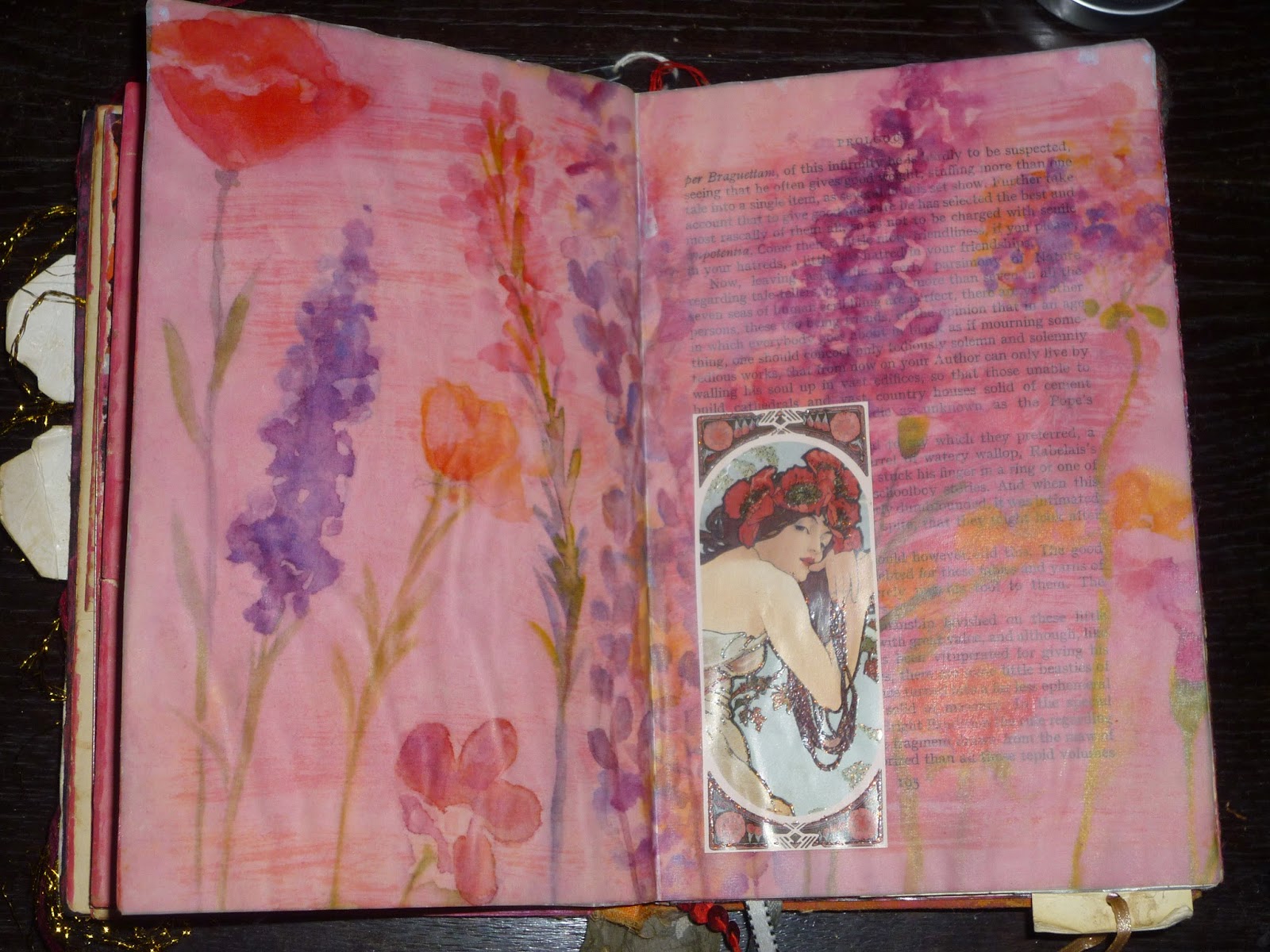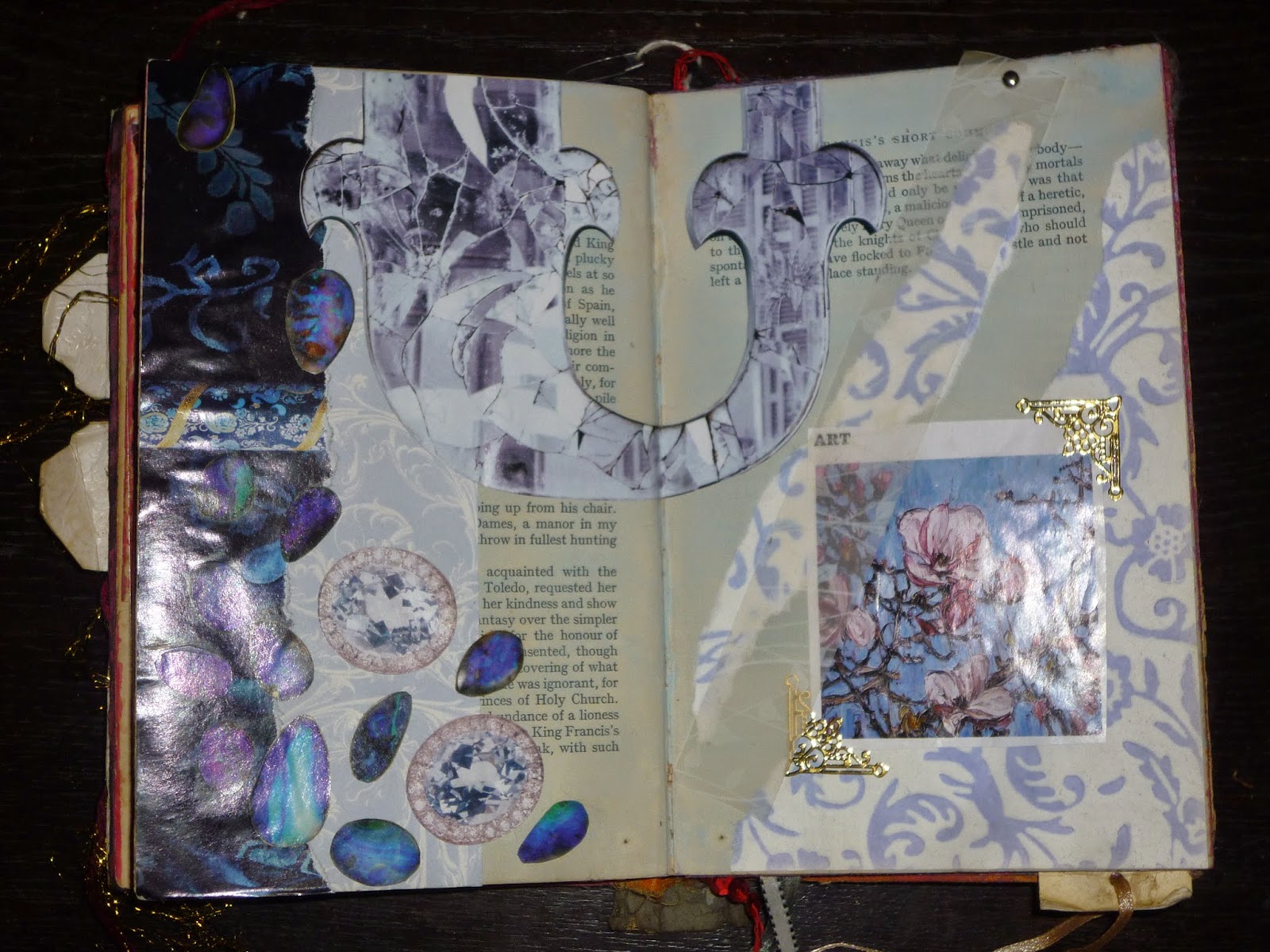on the Discovery of the Art of Altering Books
I dabbled in many forms of visual arts during my youth, but I didn't discover the one that really captured my heart until I was about 26 years old. It was quite an auspicious beginning, really.
I was modelling for a life drawing class. We were in an art studio, and there were several art books generally lying around. I was holding a 20 minute pose when I found myself facing a stack of books on a table. Anyone who has ever done life modelling will know what it's like to have a single perspective of a particular space for an extended period of time. Mostly, it's really boring. And so, of course, I made the effort to read the titles from my almost-upside down sideways perspective (relative to the books, not the floor. I was just standing there. It was the books that were askew.) One title really intrigued me. It was Altered Books Workshop by Bev Brazelton. I couldn't wait for the break so I could look at the book. And the few minutes I had to flip through that book turned out to change my life.
Fortunately, my local library had a copy of it, so I was able to take it home and go through it at my leisure. I had never even heard of altered books before. And wow, I was so in love. I wanted to try this. But here, I had the dilemma that many altered book artists encounter in the early days. We are taught from our earliest years that we should never deliberately damage or deface a book. It's hard to break that, even for the love of art.
It was then that, most fortuitously, I was given an unexpected gift from a friend. It was a copy of a 1958 edition of Droll Stories by Honore de Balzac, but significantly for me, it was already damaged. A section in the middle of the book had a corner ripped out through several pages, enough to remove a small amount of text. It was the green flag that gave me permission. I started tearing pages out, in the name of creativity, not destruction. It was absolutley thrilling. And this is what I have ended up with.
I never got around to doing any decoration on the cover. It looks pretty sad and beat-up from the outside. But there is a clue that treasures lie inside - ribbons and papers and bits and pieces poking out the edges.
I kept most of the title pages and the information about the book reasonably intact.
Did you know that there is actually a word for those brown spots that grow on books as they age? It's called foxing. Isn't that lovely? I'd much prefer to think that my hands and forearms are foxing as I age, rather than growing liver spots.
And after that, pretty much anything goes. These are some of my experiments in my first altered book.
The spread above includes one of my favourite photographic images ever. It's one of those free postcards, from a brand called rose&dressed, that I found on my travels in Switzerland. To me, this is a modern archetype, an ultimate essence of feminine power.
It's also a place to keep my treasured cards and postcards from loved ones.
I'm now on my fourth altered book, and I've done lots of other interesting things with books since then, such as using them for wallpaper. But this book remains one of my most treasured special possessions.
I was modelling for a life drawing class. We were in an art studio, and there were several art books generally lying around. I was holding a 20 minute pose when I found myself facing a stack of books on a table. Anyone who has ever done life modelling will know what it's like to have a single perspective of a particular space for an extended period of time. Mostly, it's really boring. And so, of course, I made the effort to read the titles from my almost-upside down sideways perspective (relative to the books, not the floor. I was just standing there. It was the books that were askew.) One title really intrigued me. It was Altered Books Workshop by Bev Brazelton. I couldn't wait for the break so I could look at the book. And the few minutes I had to flip through that book turned out to change my life.
Fortunately, my local library had a copy of it, so I was able to take it home and go through it at my leisure. I had never even heard of altered books before. And wow, I was so in love. I wanted to try this. But here, I had the dilemma that many altered book artists encounter in the early days. We are taught from our earliest years that we should never deliberately damage or deface a book. It's hard to break that, even for the love of art.
It was then that, most fortuitously, I was given an unexpected gift from a friend. It was a copy of a 1958 edition of Droll Stories by Honore de Balzac, but significantly for me, it was already damaged. A section in the middle of the book had a corner ripped out through several pages, enough to remove a small amount of text. It was the green flag that gave me permission. I started tearing pages out, in the name of creativity, not destruction. It was absolutley thrilling. And this is what I have ended up with.
I never got around to doing any decoration on the cover. It looks pretty sad and beat-up from the outside. But there is a clue that treasures lie inside - ribbons and papers and bits and pieces poking out the edges.
I kept most of the title pages and the information about the book reasonably intact.
Did you know that there is actually a word for those brown spots that grow on books as they age? It's called foxing. Isn't that lovely? I'd much prefer to think that my hands and forearms are foxing as I age, rather than growing liver spots.
And after that, pretty much anything goes. These are some of my experiments in my first altered book.
The spread above includes one of my favourite photographic images ever. It's one of those free postcards, from a brand called rose&dressed, that I found on my travels in Switzerland. To me, this is a modern archetype, an ultimate essence of feminine power.
It's also a place to keep my treasured cards and postcards from loved ones.






























Comments
Post a Comment